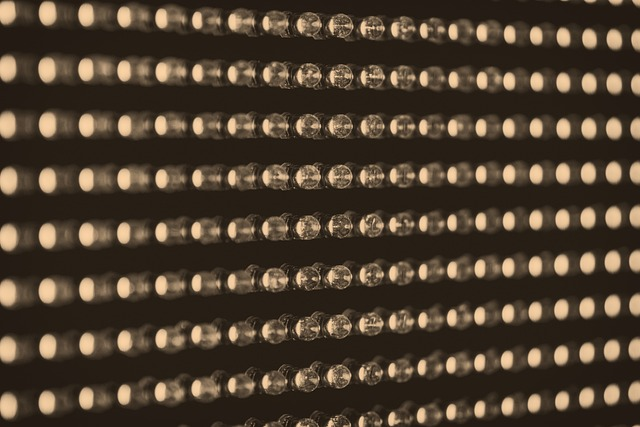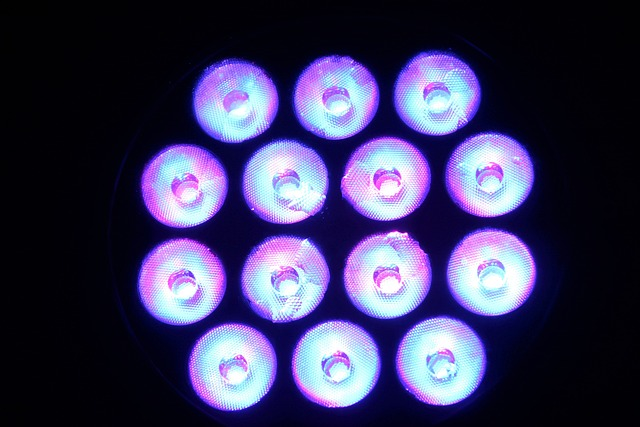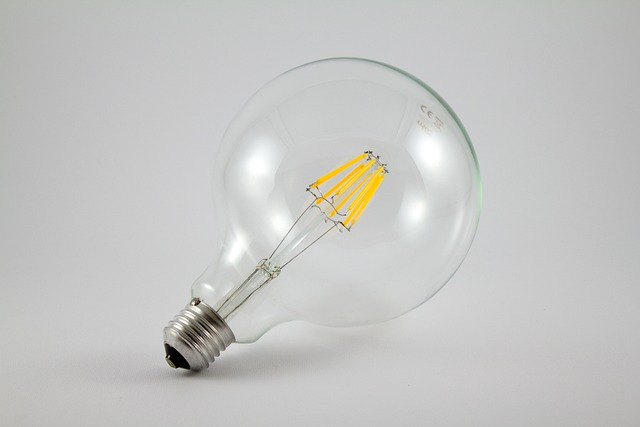Meta Description:
Discover the material makeup and benefits of LED diodes over other light sources. Learn about semiconductor materials and determine if they’re suitable for your application.
Introduction:
LED diodes have revolutionised the lighting industry over the past few decades, providing high-efficiency, long-lasting illumination in various applications. LED stands for “light-emitting diode,” These devices produce light by passing a current through a semiconductor material. However, not all LED diodes are created equal, and the material makeup of these devices can significantly impact their efficiency, brightness, and lifespan.
Light Emitting Diodes (LEDs) are solid-state devices that emit light whenever an electric current is passed through them. LED technology has come a long way since its inception and has become a popular choice for various lighting applications. LEDs have many advantages over traditional lighting sources, such as longer lifespans, lower energy and lower power consumption too, and outstanding durability.
This article will examine the world of LED light diodes and their material makeup. Discuss the different types of these semiconductor devices and materials used, the benefits of using LED diodes over other light sources, and how to determine if LED diodes are suitable for your specific needs.
LED Diode Structure
An LED diode consists of several layers of semiconductor material. The most common semiconductor materials used in LED production are gallium nitride (GaN), gallium arsenide (GaAs), and silicon carbide (SiC). The different layers of semiconductor material in an LED diode are:
P-Type Semiconductor Layer
This layer comprises a material with an electron deficiency known as “holes.” When an electric current is applied, the electrons from the N-type layer fill these holes, causing the P-type layer to become positively charged.
N-Type Semiconductor Layer
This layer comprises a material with excess electrons. When an electric current is applied, these electrons move towards the P-type layer, causing it to become negatively charged.
Active Layer
The active layer is sandwiched between the P-type and N-type layers. It comprises a semiconductor material that emits blue light only when an electric current is applied. The most common material used for the active layer is GaN.
Contact Layer
This layer is added to improve the electrical contact between the semiconductor layers and the wires that carry the electric current.

LED Diode Material Makeup
The material makeup of an LED diode plays a crucial role in determining its performance characteristics. Following are some of the materials used in LED diode production:
Substrates
LED diodes are typically grown on a substrate material. The substrate material used can affect the efficiency of the LED. Typical substrate materials used include silicon, sapphire, and silicon carbide.
Epitaxial Layers
The epitaxial layers are grown on top of the substrate material and determine the colour of the LED. The most common epitaxial materials used are GaN, GaAs, and InGaN.
Doping Materials
Doping adds impurities to the semiconductor layers to alter their electrical properties. Doping materials are added in small amounts during manufacturing to create the P-type and N-type semiconductor layers.
Encapsulation Materials
The encapsulation material protects the LED diode and provides optical properties. Encapsulation materials can be transparent or coloured to change the colour of the light emitted by the LED.

The popularity of Light-Emitting Diodes in Industries
LED diodes have revolutionised the lighting industry with their energy efficiency, long lifespan, and improved performance. They have replaced traditional incandescent and fluorescent lights in many residential, commercial, and industrial settings, resulting in significant energy savings and reduced carbon footprint.
LED diode material makeup allows for precise control over the colour and intensity of the emitted light, making them a popular choice for a variety of applications ranging from lighting and displays to automotive and medical devices.
Besides their advantages over traditional lighting sources, LED diodes have also opened up new possibilities for lighting design. They are easily dimmed in various colours, allowing greater control over lighting intensity and ambience. They also provide instant illumination, unlike traditional lighting sources that take time to warm up.
The use of LED diodes is not limited to lighting applications. They have also found their way into various other products and industries. For example, LED diodes are commonly used in traffic lights, digital billboards, and streetlights. They are also used in the aviation industry for runway and taxiway lighting and in the marine industry for nautical lighting.
Moreover, LED diodes are making a significant impact on sustainability efforts in various industries. They consume less energy than traditional lighting sources, reducing carbon emissions and the environmental impact of energy consumption. They also have a longer lifespan, resulting in less waste and fewer replacements.
Here are some of the industries where LED diodes are commonly used:
Lighting Industry
The lighting industry has significantly shifted towards LED lighting in recent years. LED lighting is better energy-efficient than traditional lighting sources and has a longer lifespan, making it a cost-effective solution for residential and commercial lighting.
LED light bulbs and organic light-emitting diodes (OLEDs) are two types of devices that generate light using different technologies, with LEDs using a semiconductor diode to produce light while OLEDs use organic materials, both emitting visible light energy, and are commonly used in a variety of applications such as displays, lighting, and signage. Cold cathode fluorescent tubes can also be used for backlighting applications in displays and signage.
Automotive Industry
LED lighting is also becoming increasingly popular in the automotive industry. LED headlights and taillights are more energy-efficient than traditional lighting sources and have a longer lifespan. LED lighting also provides brighter and clearer illumination, improving driver visibility and safety.
Consumer Electronics Industry
LED diodes are used in various electronic devices, including smartphones, tablets, and televisions. LED displays provide brighter and clearer images than traditional displays and consume less energy, leading to longer battery life.
Medical Industry
LED diodes are used in the medical industry for various applications, including phototherapy and surgical lighting. LED lighting reduces the heat generated during procedures and improves patient comfort.
Agriculture Industry
LED lighting is also becoming increasingly popular in agriculture for plant growth applications. LED grow lights provide a spectrum of light that can be customised to meet plants’ specific needs, resulting in faster growth, higher yields, and better-quality crops.

Benefits of using LED diodes over other light sources
LED diodes offer many advantages over traditional lighting sources, including both incandescent lights and fluorescent lights.
Energy Efficiency
LED diodes are highly energy-efficient, converting up to 90% of their energy into light with minimal heat loss. In comparison, traditional incandescent light bulbs convert only 10% of their energy into light, with the rest lost as heat. This high energy efficiency translates into significant energy savings and reduced electricity bills.
Long Lifespan
LED diodes have a longer lifespan than traditional lighting sources, lasting up to 50,000 hours or more. Incandescent bulbs’ laser diodes last around 1,000 hours, and fluorescent lights stay approximately 10,000. The longer lifespan of LED bulbs and diode reduces the need for frequent replacements, leading to lower maintenance costs.
Improved Performance
LED diodes provide brighter and clearer illumination than traditional lighting sources, resulting in dramatically lower power usage and better visibility and improved performance. They also offer a range of colour options, allowing for greater customisation of lighting design.
Durability
LED diodes are more durable than traditional lighting sources, with better resistance to shock, vibration, and temperature changes. This durability makes them ideal for harsh environments or applications requiring frequent on/off cycles.
Eco-Friendliness
LED diodes are environmentally friendly, producing less carbon dioxide and other harmful emissions than traditional lighting sources. They also contain no toxic substances such as mercury, making them easier to dispose of and recycle.
Instant Illumination
LED diodes provide instant illumination when turned on, unlike traditional lighting sources that require warm-up time. This instant illumination makes them ideal for applications where quick and reliable lighting is essential, such as in emergency lighting, fluorescent lamps or automotive headlights.
How do you know if a Light Emitting diode suits your application needs?
When considering whether an LED diode is suitable for your application or project needs, there are several factors to consider.
Application Requirements
The first thing to consider is whether an LED diode meets the specific requirements of your application. LED diodes come in various sizes, shapes, and colours and have different levels of brightness and efficiency. Choose an LED diode suitable for your application’s specific needs, such as brightness, colour temperature, and colour rendering index.
Energy Efficiency
LED diodes are known for their energy efficiency, which can lead to significant energy savings over time. When considering an LED diode for your application, it’s essential to consider its energy efficiency and compare it to other lighting sources. Choose an LED diode to provide the necessary illumination while minimising energy and low power consumption.
Lifespan
LED diodes have a longer lifespan than traditional lighting sources, which can lead to lower maintenance costs and fewer replacements. When considering an LED diode for your application, it’s essential to consider its lifespan and compare it to other lighting sources. Choose an LED diode with a lifespan suitable for your application’s needs.
Compatibility
LED diodes require specific drivers and controls to operate correctly. When considering an LED diode for your application, it’s essential to consider its compatibility with the drivers and rules you use. You should choose an LED diode compatible with the drivers and controls you plan to use.
Cost
LED diodes vary widely depending on size, brightness, and efficiency. When considering an LED diode for your application, it’s essential to consider its cost and compare it to other lighting sources. You should choose an LED diode that provides the necessary illumination while fitting within your budget.
LED diode lifespan compared to other light sources on the Market
LED diodes have a significantly longer lifespan than other light sources today. While the lifespan of an LED diode can vary depending on its usage and quality, most LED diodes can last up to 50,000 hours or more.
This is significantly longer than traditional lighting sources such as the incandescent bulb and fluorescent bulbs, which typically have a lifespan of 1,000 and 10,000 hours, respectively.
Incandescent bulbs heat a wire filament until it glows and emits light. However, this process produces a lot of heat, which can cause the filament to wear out quickly. This is why incandescent bulbs have a much shorter lifespan than LED diodes.
On the other hand, fluorescent bulbs produce ultraviolet light that excites phosphors inside the plastic bulb itself, creating the visible spectrum of light. However, fluorescent bulbs contain toxic substances such as mercury, making them challenging to dispose of safely.
In comparison, LED diodes pass a very electrical current through a semiconductor material, emitting white light everywhere. Since LED diodes produce very little heat, the semiconductor material has less wear and tear, resulting in a longer lifespan. Additionally, LED diodes are highly durable and resistant to shock and vibration, contributing to their longer lifespan.
Benefits of longer lifespan of LED diodes
The longer lifespan of LED diodes has many benefits, including reduced maintenance costs and fewer replacements. This makes LED diodes an excellent choice for applications that require long-term illumination, such as outdoor lighting, traffic signals, and electronic displays.
Furthermore, the longer lifespan of LED diodes also contributes to their eco-friendliness, as they require fewer resources to manufacture and dispose of compared to traditional lighting sources.
Difference between a standard LED diode and an infrared (IR) LED diode
The main difference between a standard LED diode and an infrared (IR) LED diode is the wavelength of light they produce. A typical LED diode emits visible light, while an IR LED diode emits infrared light that is not visible to the human eye.
IR LED diodes are commonly used in applications such as remote controls, security cameras, and proximity sensors, where infrared light is used to communicate information or detect objects.
Conclusion
In conclusion, LED diodes have become increasingly popular in many industries due to their many benefits, including high energy efficiency, durability, and long lifespan.
LED diodes have a significantly longer lifespan and consume less energy than traditional lighting sources, such as incandescent and fluorescent bulbs. Additionally, LED diodes are highly versatile and can be used in various applications, including lighting, displays, automotive lighting, and more.
When choosing between a standard LED diode and an infrared (IR) LED diode, it is essential to consider the specific needs of your application. While standard LED diodes emit visible light, IR LED diodes emit infrared light that is not visible to the human eye and are commonly used for communication or detection.
We expect to see even more efficient, and longer-lasting LED diodes as LED technology improves. Overall, the benefits of LED diodes and their material makeup make them an excellent choice for various applications, providing energy efficiency, cost savings, and long-term illumination.

